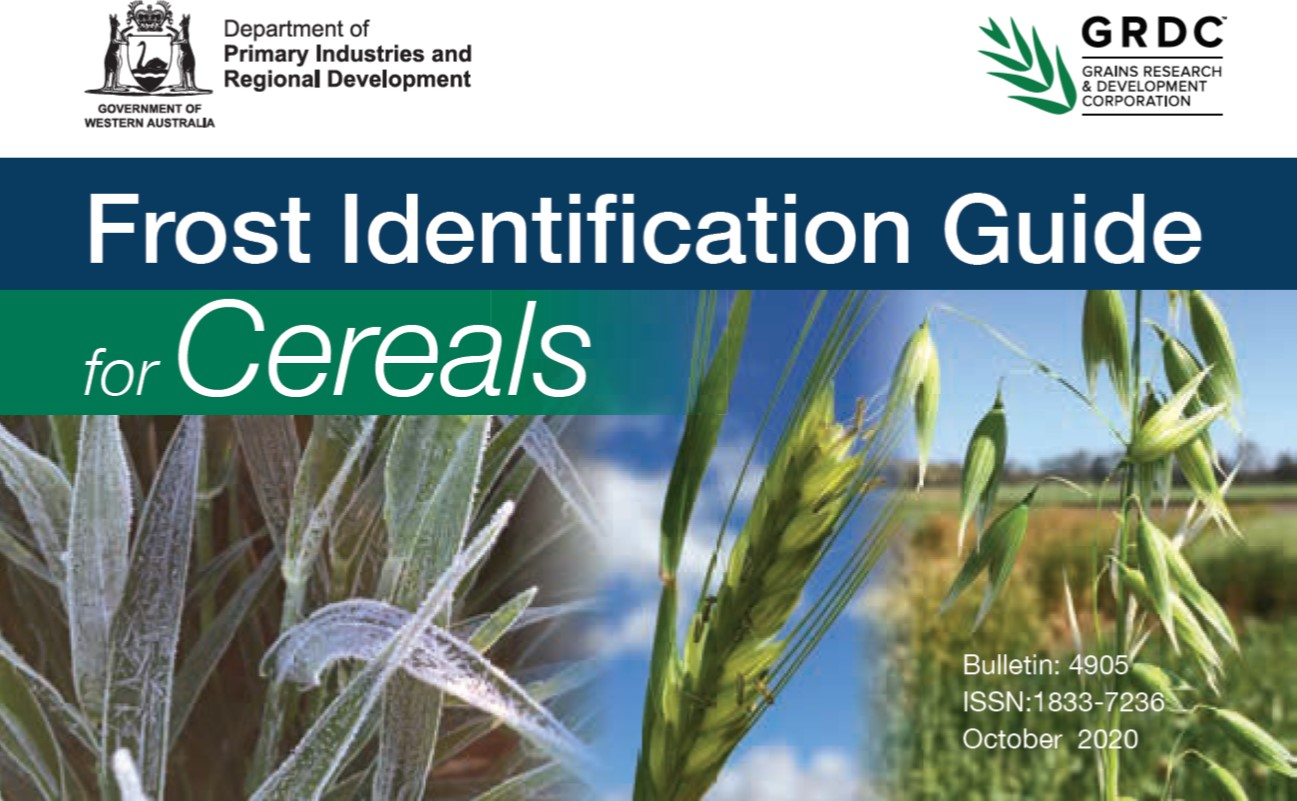Wheat, barley and oat crops are most susceptible to frost damage at flowering, although cereal crops can also be at risk during the early booting and grain filling stages.
The guide includes details on when to inspect crops, how to identify frost damage at the different stages of plant development, an overview of biotic and abiotic stresses that may have caused damage symptoms and a list of weblinks to more information.
The guide can be downloaded from this page, see link below. Hard copies are available by request.
Key points for frost assessment
- Inspect crops when they are between ear-emergence and grain-filling, and when temperatures fall below 2°C at your nearest weather station.
- Examine the crop in the lower parts of the landscape, particularly light textured soils first and if damaged proceed to higher ground.
- Walk through the crop and examine a whole plant every 10–20 paces.
- Inspect for damage: if the head has not emerged from the boot, check that stem and developing head has not been damaged, if the head has emerged, open the florets to check that the grain is developing.
- Tag a few heads with plastic tape and note the stage of grain fill. Return a week later to determine if grain filling is continuing.If the damage is very severe (eight or more heads killed out of 10) and a market for hay can be found, consider cutting the crop for hay. Do this as soon as possible after the frost so that the risk of microbial infection and loss of hay quality is small.
- If damage is not severe, yield losses may not be as great as first estimated, because of the compensation during grain filling. Monitor grain filling over the next 3–4 weeks.
Dowload DPIRD Frost Identification Guide for Cereals October 2020.pdf





